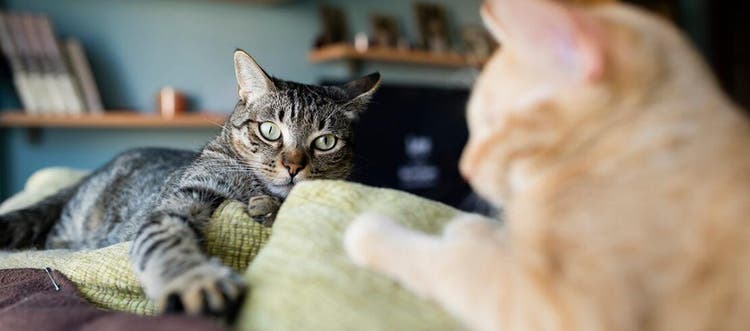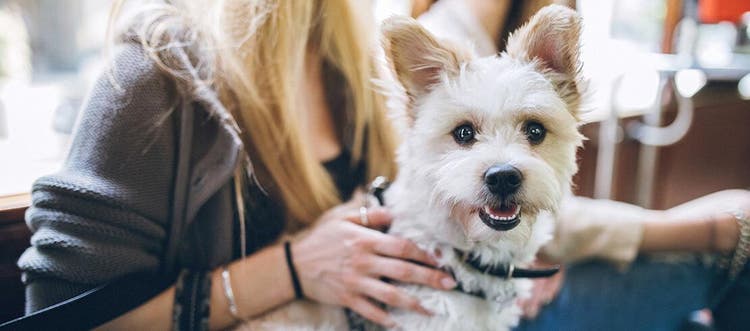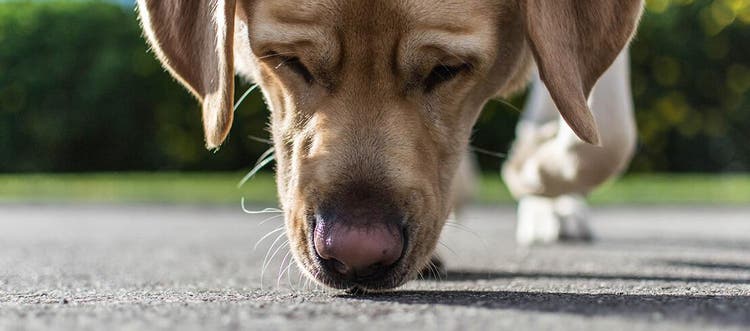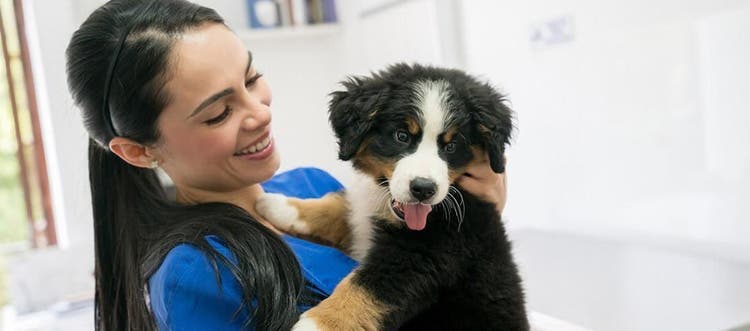Giardia can cause symptoms such as diarrhoea, weight loss and lethargy in your dog and cat. But by staying vigilant and practicing good hygiene habits, you can reduce the chances of infection and keep your pet fit and healthy.
What is Giardia?
Giardia is a single-celled parasite that infects humans, cats and dogs alike, causing unpleasant and potentially dangerous disease. While humans can potentially be infected with Giardia from both cats and dogs, cats are not known to be infected with dog strains, and dogs are not known to be infected with cat-strains of Giardia.
How do dogs and cats get Giardia?
Dogs and cats can get Giardia through contact with the faeces of infected dogs or cats respectively or when they drink contaminated water containing microscopic Giardia cysts from an infected animal’s faeces. Reinfection can occur when a dog or cat grooms and licks its own fur, contaminated with Giardia cysts. These cysts can live for months in water, increasing the chances of other animals becoming infected.
This means that a casual drink from a puddle on a hike, a dip in a contaminated stream, or sniffing and licking around areas where an infected animal has defecated can potentially lead to an infection.
Cysts of Giardia are microscopic and robust; they can survive for months in the environment, particularly in wet or damp conditions, and they can resist normal levels of chlorine found in most tap water. These characteristics make areas like communal water bowls, shared kennels, pet daycare centres, or dog parks potential hotspots for the transmission of the parasite.
Once ingested, these cysts transform into a form called trophozoites in the intestines of the dog or cat. These trophozoites attach themselves to the intestinal lining and start to multiply. While some continue living in this form, others transform back into the hardy cysts, which are shed back into the environment through the dog's or cat’s faeces, continuing the cycle of infection.
What are the signs of Giardia in dogs and cats?
Giardia can cause several symptoms, including:
- Intermittent, mild to severe diarrhoea
- Vomiting
- A dry or shaggy coat
- Unexplained weight loss
- Dehydration
These symptoms can also indicate other health conditions in your dog or cat, so be sure to consult your vet if you suspect Giardia is the culprit.
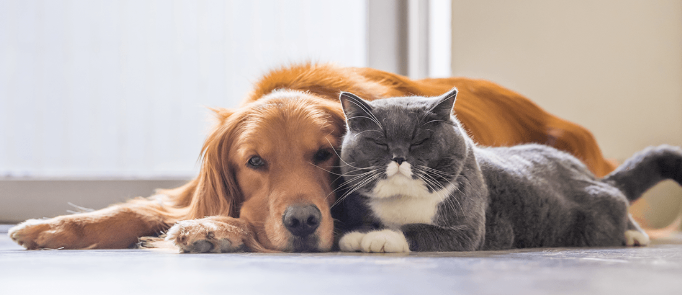
How dangerous is Giardia for dogs or cats?
Giardia poses a significant threat to dogs and cats, particularly puppies and kittens, or those with compromised immune systems. While many adult dogs and cats may carry the parasite without showing symptoms, others can experience severe and prolonged symptoms that can be distressing and even dangerous to their health.
When Giardia cysts are ingested, they hatch in a dog's or cat’s intestine, where they can damage the lining and disrupt the absorption of nutrients.
In chronic cases or if left untreated, Giardia can contribute to malnutrition and a weakened immune system, leaving dogs and cats susceptible to other infections. Young puppies and kittens, whose immune systems are still developing, are at particular risk for serious complications from a Giardia infection.
However, with early diagnosis and appropriate treatment, the prognosis for dogs and cats infected with Giardia is generally very good. For this reason, it's crucial to monitor your pet for signs of infection and consult your vet if you suspect Giardia. The sooner treatment begins, the better the prognosis for your furry friend.
How is Giardia diagnosed?
Giardia is a common cause of diarrhoea in dogs and cats, especially in pets that have spent time in shared boarding facilities such as kennels or shelters. It can be detected and treated relatively easily. If you suspect Giardia, your vet will test faecal samples from your dog or cat to determine the parasite’s presence.
How is Giardia treated?
The first step is to take your dog or cat to a veterinarian. Only a qualified professional can accurately assess your pet’s condition, make a diagnosis and recommend appropriate treatment options. If you don’t already have a veterinarian, you can use this interactive map to find the one closest to your location.
Nevertheless, for informational purposes only, here is an overview of the main treatment options:
The primary medications used to treat Giardia are anti-parasitic drugs. The most commonly used ones include fenbendazole and metronidazole for a prolonged course, depending on the severity of the infection. It's important to complete the entire course of medication even if symptoms improve before the treatment has finished, as the parasite can still be present and reinfection may occur.
In addition to anti-parasitic medication, your vet might prescribe a probiotic to help restore healthy gut bacteria, which can be disrupted by both Giardia and the medications used to treat it. A diet change may also be recommended during the treatment period. This typically involves feeding a highly digestible diet to reduce the strain on your pet’s digestive system and allow it to heal.
If your dog or cat has been significantly dehydrated due to persistent diarrhoea, your vet may administer subcutaneous or intravenous fluids to restore their hydration and electrolyte levels. In severe cases, hospitalisation may be required.
After the initial treatment, your vet will usually request follow-up faecal samples to ensure the Giardia has been fully eradicated. This is typically done a few weeks after the completion of treatment, as it can take some time for all the cysts to be eliminated from your pet’s system. In some cases, repeat treatments might be necessary if the infection persists.

How can you prevent Giardia?
You can reduce the chances of your dog or cat becoming infected with Giardia in several ways:
- Make sure your pet has clean, safe drinking water at all times. If you plan to be outside for several hours with your dog, carry bottled water or a canteen for your dog, as well as a portable dog bowl.
- Do not allow your dog to drink communal water in public places. This includes puddles, streams, riverbanks, fountains and so on.
- Keep your dog leashed if you can’t trust them not to drink from public water sources.
- Pick up and dispose of your dog’s faeces immediately to prevent the spread of the parasite, taking care to wash your hands afterwards. Clean your cat’s litter tray as soon as possible to avoid the spread of Giardia cysts between cats in the household.
How can you prevent reinfection?
If your vet diagnoses your dog or cat with Giardia, there is a chance your pet will get reinfected. It is recommended to bathe your dog regularly and disinfect your pet’s water bowls, food bowls and toys to eliminate any remaining Giardia cysts.
You can also prevent reinfection by following these tips:
- Be extra vigilant about where your dog drinks and consider disinfecting potential sources.
- If you have another dog or a cat, consider getting them tested for Giardia in case they are carriers and a potential source of infection.
- Be mindful when your dog is socialising with other dogs in parks, kennels or grooming facilities, particularly where water sources are present.
- Pick up and discard of dog faeces promptly
- Clean cat litter trays promptly and disinfect litter trays regularly
- Keep your cat indoors to prevent infection from potentially infected cats in the neighbourhood
Can you get Giardia from your dog or cat?
Giardia is a zoonotic disease, which means it can be transmitted between animals and humans. In some cases, humans can contract Giardia by accidentally swallowing cysts that have been shed in a dog's or cat’s faeces. This can occur through direct contact with infected faeces or indirectly by touching contaminated surfaces or ingesting contaminated water or food.
While there is a risk of transmission, it's important to note that the strains of Giardia that commonly infect dogs and cats are often different from those that infect humans. Despite this, cross-species transmission can occur, especially with certain strains of Giardia that are known to infect multiple species.
This possibility highlights the importance of good hygiene practices when handling dogs and cats, particularly those that are infected or suspected of being infected with Giardia. Always wash your hands after cleaning up after your pet and avoid letting your pet lick your face, especially if it is showing symptoms of a Giardia infection.
References
1. Wasik, B. Is Giardiasis Getting Too Much Attention for Diarrhoea! VetzInsight From Veterinary Partner and VIN. October 17, 2016. https://www.vin.com/vetzinsight/default.aspx?pid=756&id=7616102
